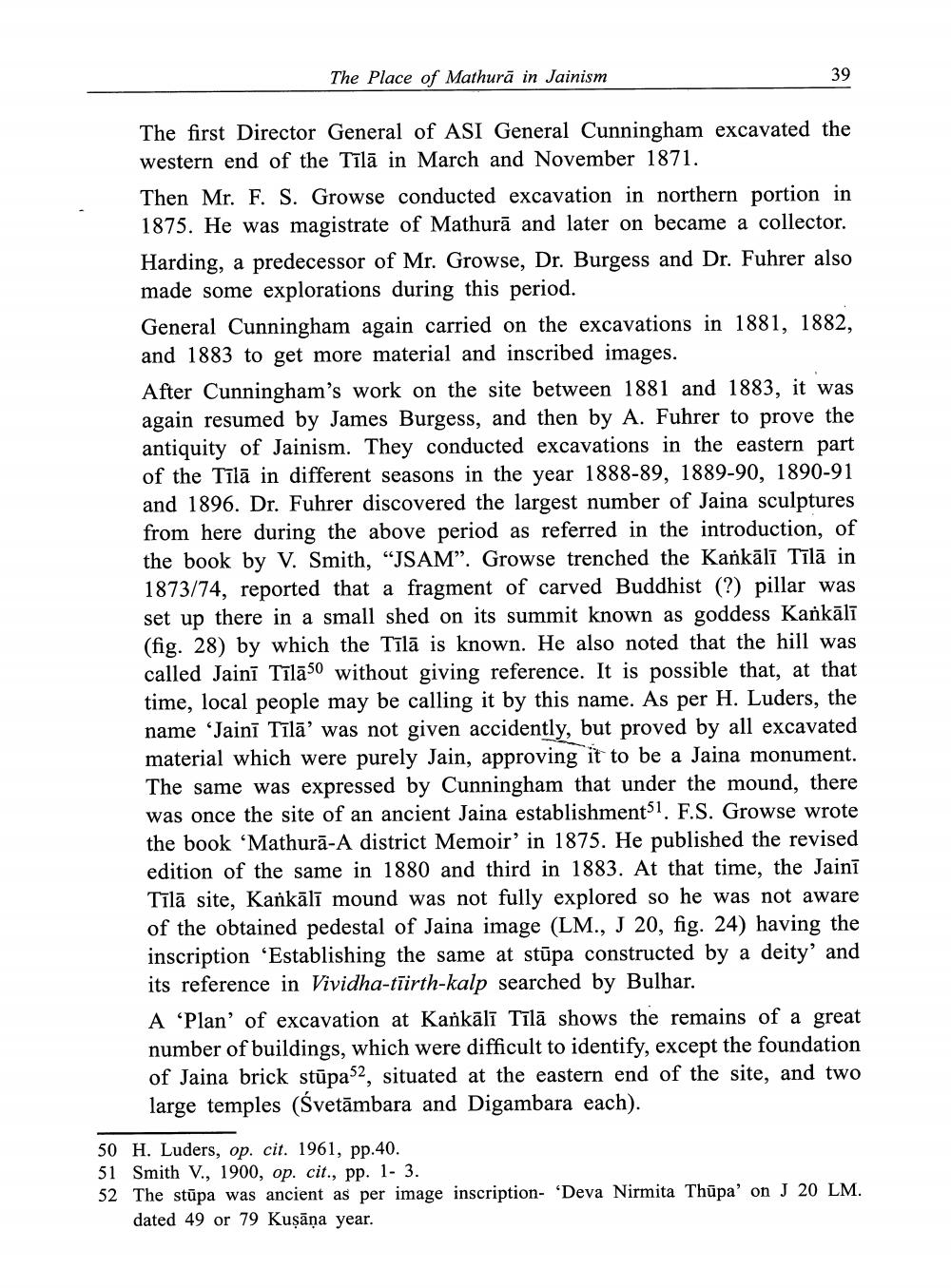________________
39
The Place of Mathura in Jainism
The first Director General of ASI General Cunningham excavated the western end of the Tilä in March and November 1871.
Then Mr. F. S. Growse conducted excavation in northern portion in 1875. He was magistrate of Mathura and later on became a collector. Harding, a predecessor of Mr. Growse, Dr. Burgess and Dr. Fuhrer also made some explorations during this period.
General Cunningham again carried on the excavations in 1881, 1882, and 1883 to get more material and inscribed images.
After Cunningham's work on the site between 1881 and 1883, it was again resumed by James Burgess, and then by A. Fuhrer to prove the antiquity of Jainism. They conducted excavations in the eastern part of the Tila in different seasons in the year 1888-89, 1889-90, 1890-91 and 1896. Dr. Fuhrer discovered the largest number of Jaina sculptures. from here during the above period as referred in the introduction, of the book by V. Smith, "JSAM". Growse trenched the Kankālī Tīlā in 1873/74, reported that a fragment of carved Buddhist (?) pillar was set up there in a small shed on its summit known as goddess Kankali (fig. 28) by which the Tila is known. He also noted that the hill was called Jaini Tila50 without giving reference. It is possible that, at that time, local people may be calling it by this name. As per H. Luders, the name 'Jainī Tīlā' was not given accidently, but proved by all excavated material which were purely Jain, approving it to be a Jaina monument. The same was expressed by Cunningham that under the mound, there was once the site of an ancient Jaina establishment, F.S. Growse wrote the book 'Mathura-A district Memoir' in 1875. He published the revised edition of the same in 1880 and third in 1883. At that time, the Jainī Tīlā site, Kankālī mound was not fully explored so he was not aware of the obtained pedestal of Jaina image (LM., J 20, fig. 24) having the inscription 'Establishing the same at stūpa constructed by a deity' and its reference in Vividha-tiirth-kalp searched by Bulhar.
A 'Plan' of excavation at Kankālī Tīlā shows the remains of a great number of buildings, which were difficult to identify, except the foundation of Jaina brick stupa32, situated at the eastern end of the site, and two large temples (Śvetämbara and Digambara each).
50 H. Luders, op. cit. 1961, pp.40.
51 Smith V., 1900, op. cit., pp. 1- 3.
52 The stupa was ancient as per image inscription- 'Deva Nirmita Thūpa' on J 20 LM. dated 49 or 79 Kuṣāņa year.




